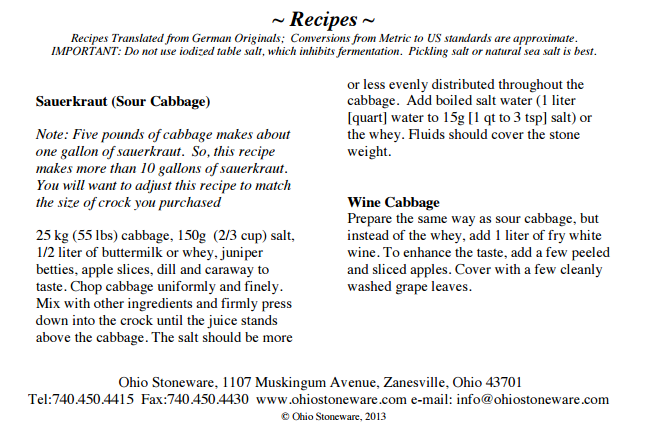- Joined
- Apr 18, 2006
- Messages
- 16,779
- Reaction score
- 5,910
I made red sauerkraut last year only to ruin it by topping off a 1 gallon jar with an improper concentration of saline due to run-off. So, I decide to get a real sauerkraut crock from
Ohio Stoneware
As you read this, you will see I made a point of repeatedly calling attention to the amount of salt and how it extracts water. Too much is bad taste wise, too little it won't leach out the water adequately.
I have the 3 gallon crock, with weights, and lid that has a water groove to act as an air lock. This is their catalog.
- Ohio Pottery.
I'll show you what I did tonight. - This is a video that I reviewed before getting started. It has some with basic instructions for making kraut. - Its not mine. [ame]https://www.youtube.com/watch?v=Mcj3O10Mstw[/ame]
The intent is use this for a lacto source for my next Schnellsauer - Berliner Weisse (Fast Sour Berliner Weisse.) I have yogurt maker that's a great device for stepping up lacto starters. Oh and I can use it all summer to throw on brats!!!!:rockin:
Here goes...
Ohio Stoneware
As you read this, you will see I made a point of repeatedly calling attention to the amount of salt and how it extracts water. Too much is bad taste wise, too little it won't leach out the water adequately.
I have the 3 gallon crock, with weights, and lid that has a water groove to act as an air lock. This is their catalog.
- Ohio Pottery.
I'll show you what I did tonight. - This is a video that I reviewed before getting started. It has some with basic instructions for making kraut. - Its not mine. [ame]https://www.youtube.com/watch?v=Mcj3O10Mstw[/ame]
The intent is use this for a lacto source for my next Schnellsauer - Berliner Weisse (Fast Sour Berliner Weisse.) I have yogurt maker that's a great device for stepping up lacto starters. Oh and I can use it all summer to throw on brats!!!!:rockin:
Here goes...



